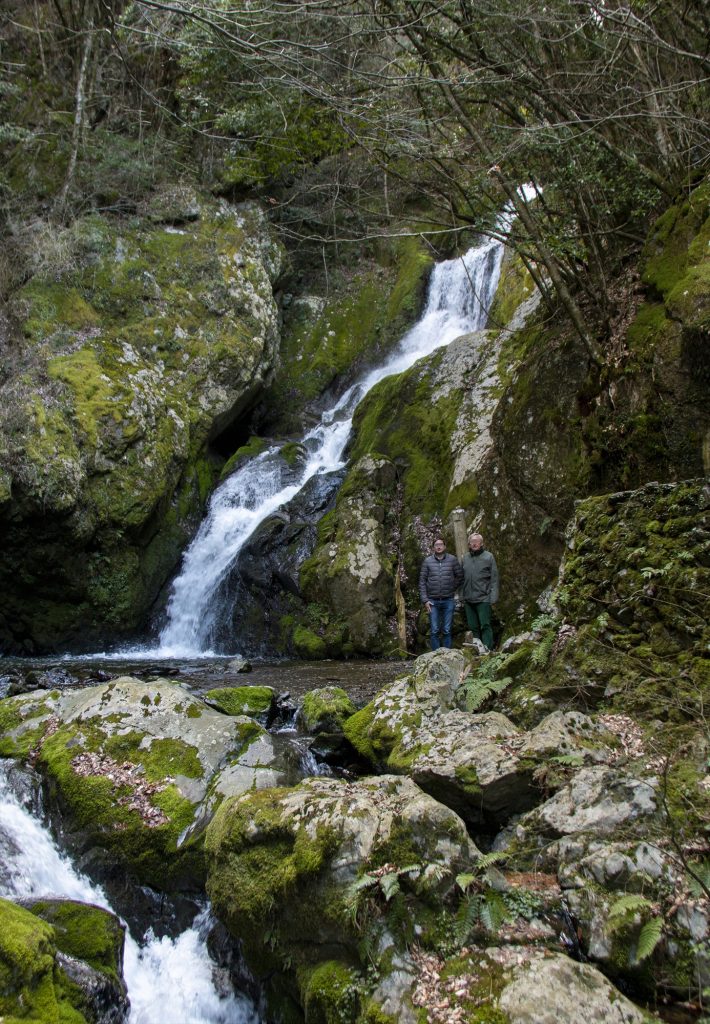This is about a guided tour I did for a German family the other day.
After the series of earthquakes we had to reorganise the tour schedule, one day in Fukuoka. That was a really exciting experience for both of me and the guests! After I picked up the guests at Hotel Nikko Fukuoka, we headed for Dazaifu shrine which is one of the most important Shinto shrines in Japan because the person enshrined at this shrine is the God of STUDIES, whose name is “Sugawara no Michizane. If you try to translate his name into European language, it would be “Michizane de/van/von Sugawara”, for your information. He was a minister who lived in the 8th century in Kyoto, but was kicked out of Kyoto by his rival ministers and clans. He was renowned for his talented skills of hand writing calligraphy knowledge of ancient Chinese philosophy and politics. Many students visit this shrine before they take entrance exams for high school / college / university, and I did it when I was 15 years old before the exams in February, it’s 25 years ago and the God helped me pass the exams, of course I made a lot of efforts.


The access to this shrine should be easy if you take a city express way which runs over the city area. Get off at Dazaifu IC, the shrine is only a few minutes away. Walking through and browsing the shops sitting both both sides of the street, here are local souvenirs of Fukuoka. Their recommendation is “Umegae-mochi”, rice cakes consisting sweet red bean paste inside. The legend says the God who was a minister lived in the end of 8th century, gained his health by eating this when he was sick.

Walking through the shopping street and bridges built over a pond, we got to the shrine building. First thing we needed to do before entering the shrine was purification ritual called “Chouzu / Temizu”, practising an easy motion. At the main shrine building, we prayed for good things in front of the God of studies, this is not only a making wish but also a promise or determination to yourself. It goes like, “I’ll finish that this year”, “I’ll pass the exam, watch me” for example. And then walked around in the shrine area seeing other smaller shrines and beautiful old trees. Two of the camphor trees planted behind the main shrine are called “Meoto Gusu”, meaning “a couple of conjugal camphor trees”, a symbol of good married couples. Japanese visitors tend to take photos in front of these trees in memory of their travel. Other smaller shrines are also fun to visit and see. Each of them has a god enshrined, some of them are family members of Michizane’s



Next time, I will post the rest of this tour on my blog. Hope you check it out.
Walking through the shopping street to the shrine, footage.















































